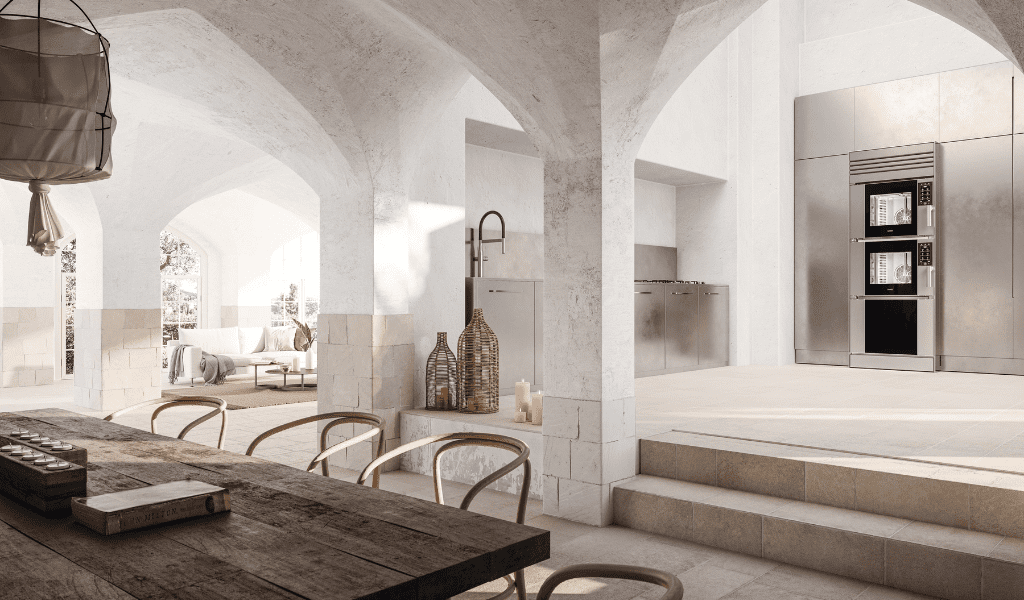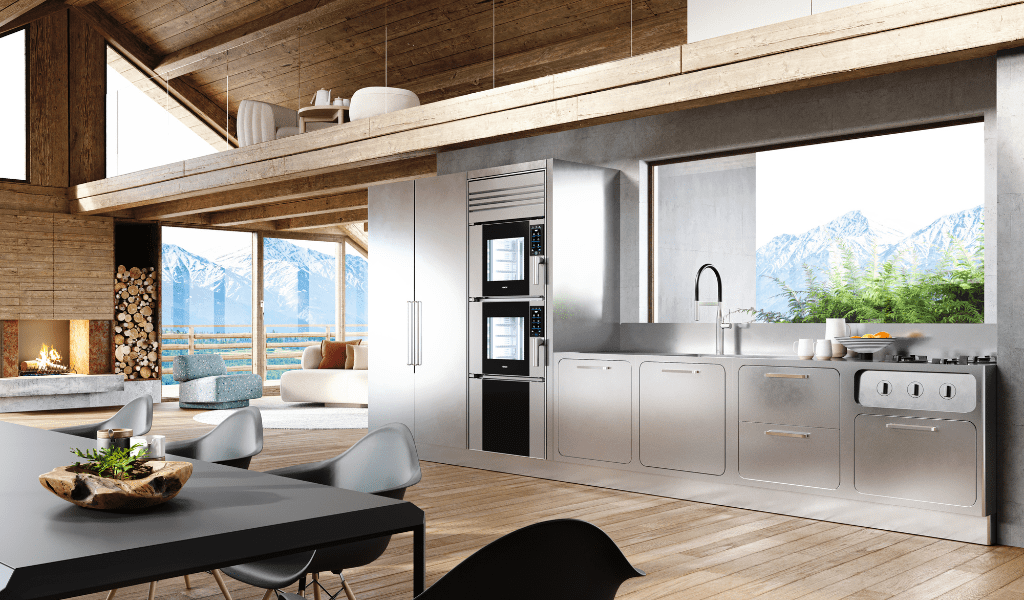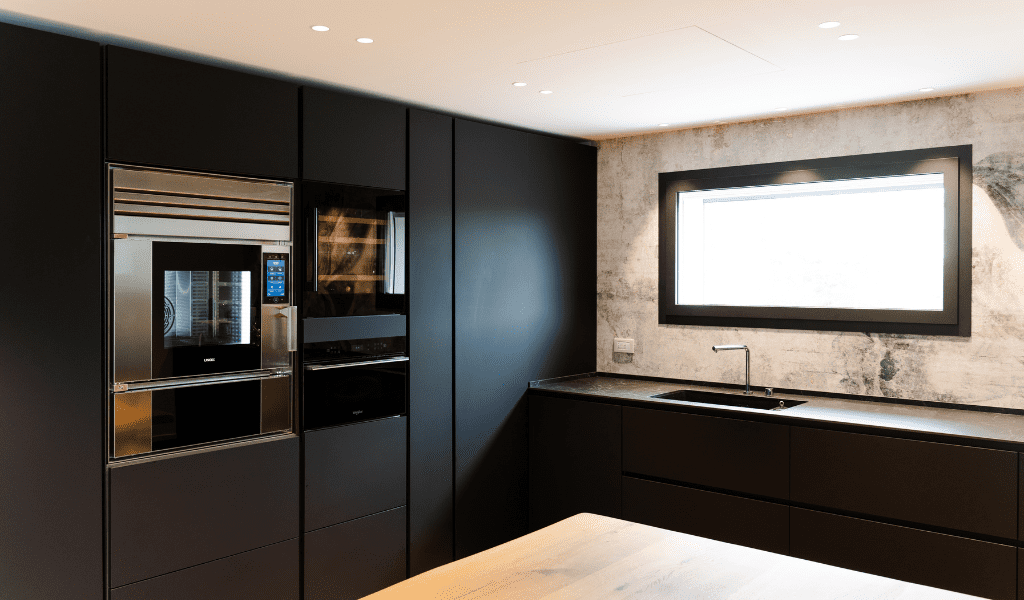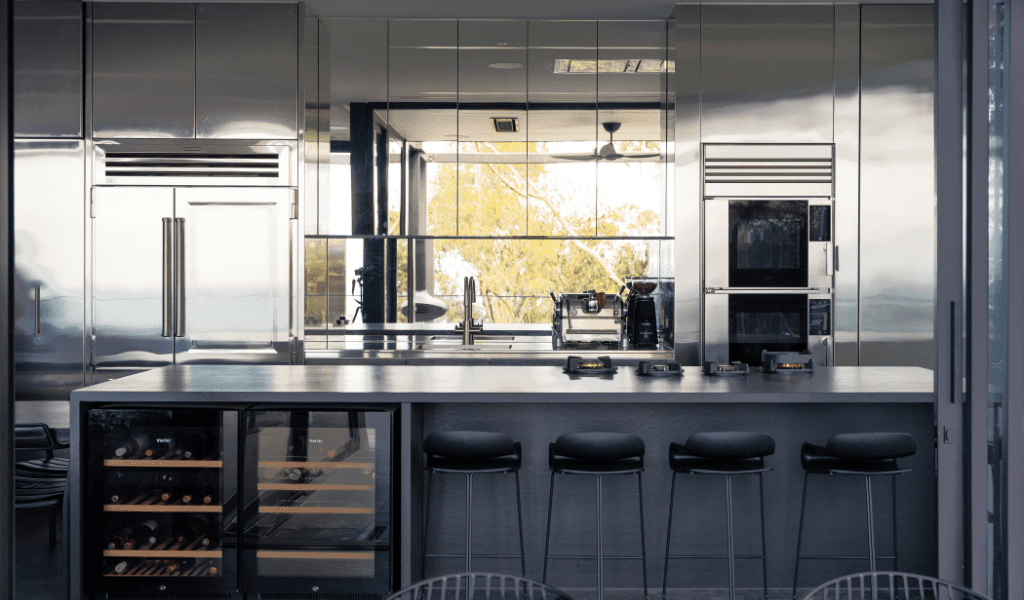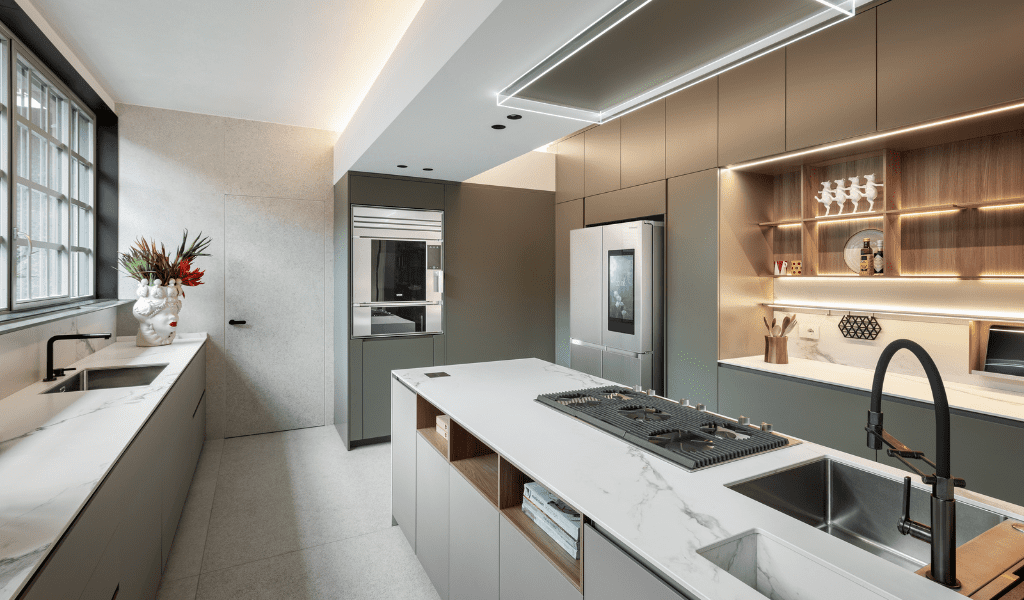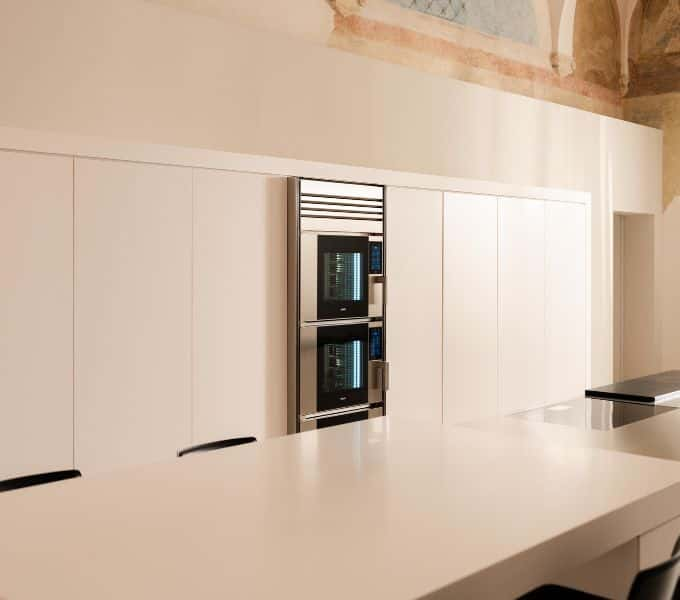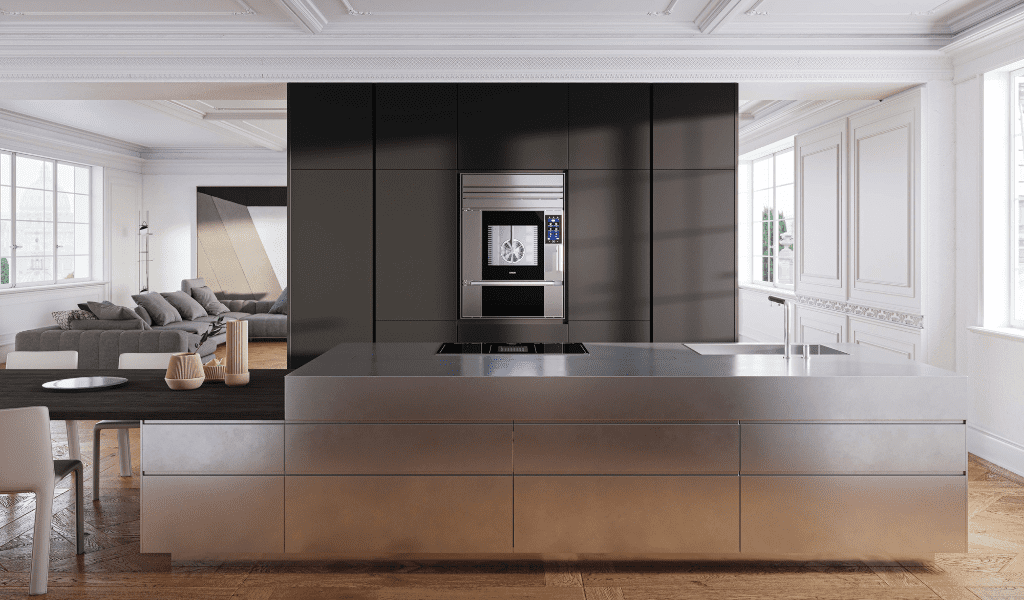Index
The Space Dedicated to the Kitchen: Orientation and Positioning
The Shape of the Kitchen: Achieving Harmonious Balance
Ergonomics in the Kitchen: Organising Functional Areas
Positioning Appliances: Installation Trends
Designing the Home Kitchen: Enhancing Everyday Life
Designing a home kitchen is a task that can be undertaken during the construction of a new residence or as part of a renovation project for existing spaces. In either case, the kitchen holds a central position within the house, serving as a focal point for social interaction and daily activities. Given its importance, crafting your kitchen design is a fundamental practice that demands thorough research, attention, and dedication. Incorrect design choices can have a detrimental effect on daily life within this essential environment.
What are the key factors to consider when designing a home kitchen?
The Space Dedicated to the Kitchen: Orientation and Positioning
During the initial planning phase, one of the foremost decisions to be made involves determining the location of the kitchen space within the home. This decision encompasses both orientation and positioning in relation to other domestic environments.
When selecting the location of the kitchen based on cardinal orientation, it's essential to consider principles of bio-architecture. These principles advocate for orienting spaces to maximise natural sunlight exposure throughout the day. Consequently, experts recommend positioning the kitchen towards the South, as it is a space where occupants typically spend a significant amount of time and thus necessitates prolonged natural lighting.
Internally, the kitchen can be designed as a distinct and self-contained space, functioning as an eat-in kitchen. Alternatively, it can be integrated into an adjacent and complementary environment, such as the living room, to create an open-plan layout. Each approach offers unique advantages, with the ultimate choice being highly personal and dependent on various factors, including available space, functionality requirements, and individual aesthetic preferences.
The Shape of the Kitchen: Achieving Harmonious Balance
Once the position of the kitchen within the home is determined, selecting its shape becomes essential. Among the various configurations available are:
- Linear Kitchen: This type of kitchen extends along a single wall, making it suitable for narrow or small spaces.
- Corner Kitchen: A common choice is the corner or double corner kitchen, forming an L or C shape along the walls to maximise storage and workspace.
- Kitchen with Island: Typically found in large, open spaces, this design includes an island in the center surrounded by linear modules, providing additional work surfaces and accommodating appliances.
- Kitchen with Peninsula: Similar to the kitchen with an island, this layout features a peninsula connected to a kitchen module or wall, visually extending the composition.
The choice of kitchen shape is influenced by available space and must consider desired functionality while maintaining harmony with surrounding environments.
Ergonomics in the Kitchen: Organising Functional Areas
Another crucial decision affecting daily domestic and culinary activities is the layout of functional areas based on principles of efficiency and ergonomics.
Functional zones in the kitchen include:
- Cooking Area: Housing the hob, oven, and/or microwave.
- Washing Area: Consisting of the sink and dishwasher.
- Storage Area: Where the refrigerator and pantry are located.
These elements should be arranged in balance, following the "Triangle Rule." This rule dictates positioning the three functional areas to form a hypothetical triangle, ensuring the sum of the distances between them is less than 6 meters. Adhering to this rule results in an ergonomic kitchen design that facilitates fluid movement and enhances meal preparation efficiency while maintaining order in the environment.
Positioning Appliances: Installation Trends
Choosing the placement of household appliances can be simplified by following the triangle rule. However, several factors can influence this decision within the kitchen. It's crucial to consider the availability of electrical, water, and gas connections. Additionally, providing ample space in front of appliances ensures unhindered operation and freedom of movement, particularly when they are in use.
For certain appliances, selecting the appropriate installation type may be necessary. Take, for instance, the placement of the oven: while traditional domestic ovens are often discreetly positioned within kitchen bases, modern professional ovens for homes, such as the SuperOven, are showcased as design statements. These are typically installed inside dedicated oven columns, simplifying usage and eliminating the need for users to bend down.
Installing a premium oven like this offers various methods: flush installation, where it seamlessly integrates into the kitchen structure; cantilevered installation, protruding slightly from the structure; or freestanding, placed independently within the kitchen environment. Each installation method enhances the product, serving as an elegant focal point. The choice of installation depends on the kitchen's aesthetic preferences, harmony of lines, and overall design.
Discover the ideal column oven for your kitchen
Efficient and functional kitchen space, achieved through thoughtful location choices, structural shape, and organisation of functional areas, is essential for enhancing the daily culinary experience. A well-designed kitchen streamlines activities, offering comfort, practicality, and freedom of movement. It should align with the lifestyle of its inhabitants, catering to individual needs, thereby creating an environment that fosters the enjoyment of cooking to the fullest.

